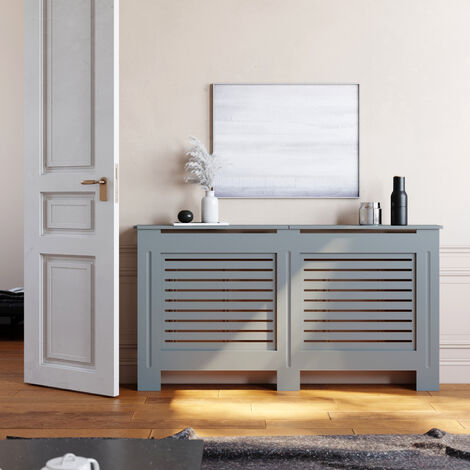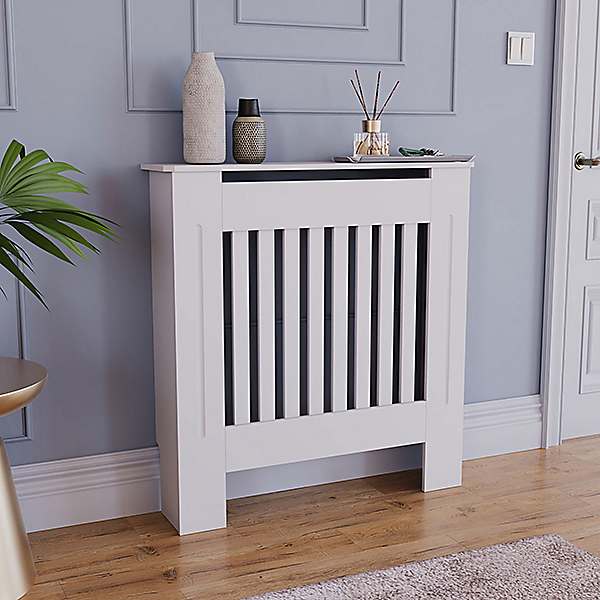Radiator Cover Concepts to Boost Your Interior Design
Wiki Article
Radiator Cover Styles: Picking the Right Furniture for Your Area
Selecting the suitable radiator cover design is an essential decision that can enhance both the capability and aesthetic allure of your space. With a range of options available, from modern minimal styles to a lot more typical vintage styles, understanding the implications of each choice is crucial.Recognizing Radiator Cover Kind
When taking into consideration radiator covers, it is necessary to understand the different types available to guarantee an appropriate suit for both functionality and visual appeals. Radiator covers can be generally categorized right into three key kinds: wood, metal, and bespoke alternatives.
Metal radiator covers, on the various other hand, use a modern-day and sleek appearance. Normally made from products such as steel or aluminum, these covers are durable and can stand up to heats. They are usually readily available in various shades and finishes, making them suitable for contemporary settings.
Bespoke radiator covers provide a customized service, created specifically for the one-of-a-kind measurements and aesthetic needs of a space. These covers can be made from a mix of materials, making certain both usefulness and design coherence.

Comprehending these kinds permits homeowners to pick a radiator cover that not only hides the radiator efficiently however also improves the general atmosphere of their indoor space.
Modern Minimalist Layouts
Modern minimal designs in radiator covers prioritize simpleness and capability while maintaining a streamlined aesthetic. These layouts usually include clean lines, muted shades, and unobtrusive types that effortlessly mix into modern insides. The focus gets on decluttering visual space, enabling the radiator covers to offer their function without attracting unneeded attention.Materials typically utilized in contemporary minimalist radiator covers consist of lightweight metals, glass, and top quality wood. These materials not just enhance resilience however also add to a refined appearance. The usage of perforated patterns or open slats ensures optimum warmth dissipation while still giving an advanced look.
Along with aesthetics, modern minimal designs usually include multifunctionality. Numerous radiator covers dual as racks or decorative surfaces, offering extra energy without endangering the design values. This flexibility is especially beneficial in smaller sized areas where making the most of capability is essential.
Traditional Vintage Styles
Traditional vintage styles in radiator covers evoke a feeling of fond memories and classic style, commonly defined by elaborate outlining and abundant products. These covers attract ideas from different historical periods, consisting of Victorian, Edwardian, and Art Deco, each contributing distinct imaginative components and workmanship.Victorian styles typically include elaborate carvings, floral themes, and fancy scrollwork, reflecting the magnificence of the period. Edwardian designs, on the other hand, often existing an extra streamlined look, with fragile embellishments and lighter colors that match the airy aesthetic of the period. Art Deco introduces bold elegant surfaces and geometric forms, marrying function with striking visual allure.
Using vintage radiator covers not only offers a sensible purposeâEUR" hiding unpleasant radiators and providing added surface area areaâEUR" however likewise enhances the overall decoration of an area. They work as conversation pieces, including depth and personality to spaces ranging from traditional to eclectic. When picking a traditional vintage radiator cover, consider how its style aligns with the existing home furnishings and architectural attributes of your home, making sure a cohesive and harmonious setting that celebrates classic appeal.
Choosing Materials and Finishes
Choosing the ideal products and finishes for radiator covers is crucial in attaining both aesthetic allure and resilience. The option of product can significantly influence the overall look of the area while also figuring out the longevity of the cover. Typical materials include wood, metal, and composite alternatives, each offering distinctive benefits and styles.Wood offers a classic, cozy look that can be discolored or painted to match different decors. site web It may require normal upkeep to stop warping or damage from warmth. Metal covers, such as those made from steel or aluminum, supply a modern look and superior longevity, able to withstand higher temperatures without compromising integrity. These surfaces can be powder-coated or repainted to enhance their aesthetic appeal.

Integrating Covers With Existing Decoration
Integrating radiator covers with existing decoration calls for a thoughtful method to make certain harmony within the space. To accomplish this, take into consideration the general design of your roomâEUR" whether it is modern-day, standard, or eclectic. Select a radiator cover that enhances the existing furnishings and building details, such as crown molding or window trim.
Color control plays a critical function; a cover painted in a shade that mirrors other elements in the space can create a natural appearance. Conversely, a contrasting finish can act as a declaration item, improving the aesthetic interest of the location.
Furthermore, focus on the product of the radiator cover. Wood covers can provide warmth and a natural feel, while steel alternatives might use a streamlined, contemporary aesthetic. Patterns or ornamental intermediaries can also be utilized to connect various other style motifs present in your decor.
Lastly, take into consideration the useful element of the cover. Guarantee it permits appropriate warmth flow while additionally providing a flat surface for ornamental things or plants, thus improving both aesthetics and use. Thoughtful combination of radiator covers can raise the general setting of your area.
Final Thought
The choice of an appropriate radiator cover style plays a crucial role in improving both the functional and visual elements of a space. By thinking about various layouts, such as contemporary minimalist and traditional vintage styles, in addition to ideal materials and finishes, an unified combination with existing decor can be attained. Ultimately, the best radiator cover not just conceals burner successfully yet also contributes to the general setting and design communication This Site of the indoor environment.Picking the ideal radiator cover style is a critical decision that can boost both the capability and visual allure of your area.Modern minimalist designs in radiator covers prioritize simplicity and capability while preserving a smooth visual. Lots of radiator covers double as racks or attractive surface areas, offering extra energy without jeopardizing the style values - Radiator cover.The use of classic radiator covers not only serves a sensible purposeâEUR" hiding undesirable radiators and providing added surface area areaâEUR" however additionally improves the total style of a room. When choosing a timeless vintage radiator cover, consider exactly how its design aligns with the existing furnishings and architectural features of your home, making certain a cohesive and harmonious environment that commemorates classic elegance
Report this wiki page